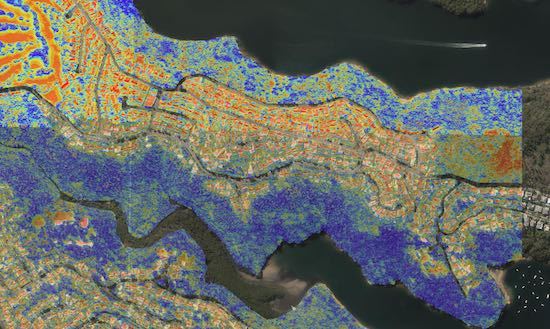
 Australian rooftops have enormous untapped potential for the installation of solar power, a new report has found – even despite the fact that homes and businesses already have been installing it at a record-breaking and world-leading rate.
Australian rooftops have enormous untapped potential for the installation of solar power, a new report has found – even despite the fact that homes and businesses already have been installing it at a record-breaking and world-leading rate.
Research by the University of New South Wales has found that 40 per cent of Sydney’s vacant roof surfaces could be used for solar – up from the 1 per cent currently housing PV – adding an extra 22 per cent to the city’s current energy supply.
In Melbourne, meanwhile, modelling shows 38 per cent of roofing is solar suitable, which if realised would produce 12 per cent of the city’s electricity needs.
In Brisbane, roughly 45 per cent of rooftops could house solar panels, and around 50 per cent in the ACT, the study found.
The numbers come from a newly launched solar mapping tool, called SunSPoT, developed by the UNSW in conjunction with the Australian Photovoltaic Institute, Solar Analytics and Enosi.
The online tool, launched last Tuesday, uses geographical information systems data to estimate the technical potential of rooftop solar, accounting for the tilt of roof surfaces and shading at the site.
The launch follows the publication of a separate report from UNSW and APVI, showing businesses in Melbourne’s CBD could meet more than 12 per cent of their own electricity needs – and cut their collective power costs by more than $100 million – just by tapping the city’s true rooftop solar potential.
The research – published two weeks ago – found that there was enough suitable rooftop space in the Melbourne local government area to install a total of 461MW of PV.
Speaking at last week’s launch of SunSPoT, UNSW Associate Professor and APVI chair Renate Egan said she hoped the mapping tool would allow home and business owners to assess the solar potential of their rooftops.
“Australia leads the world in rooftop solar, but there is still lots of potential for adding more solar, and it’s now the cheapest form of electricity generation.
“SunSPoT aims to give energy consumers the information they need to make a decision how much solar they should install, and how much they will save when they do,” Egan said.
“This project is an example of how the program encourages collaboration between local governments, research organisations and the private sector to deliver a solution that can be applied locally and shared around the country,” said federal minister for Urban Infrastructure and Cities, Paul Fletcher, at the tool’s launch.
“Being developed under the Australian Government’s Smart Cities and Suburbs Program, the platform will benefit end users by allowing them to calculate their solar power potential and make informed decisions on investment in solar power generation.”
At this stage, SunSPoT can be used online to assess solar potential on specific rooftops in early-adopter local government areas, including Ku-ring-gai, Willoughby, Randwick, Northern Beaches and Lane Cove.
More cities and towns will be added as the program expands, APVI said.

Sophie is editor of One Step Off The Grid and editor of its sister site, Renew Economy. Sophie has been writing about clean energy for more than a decade.
